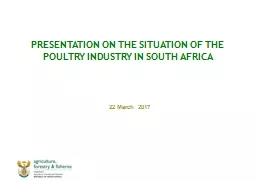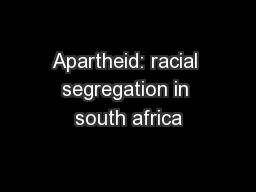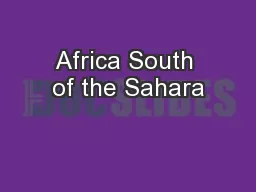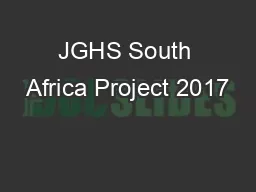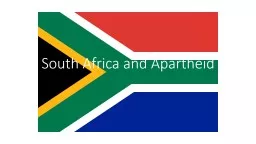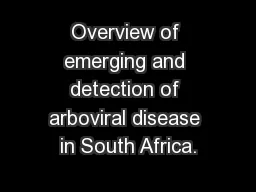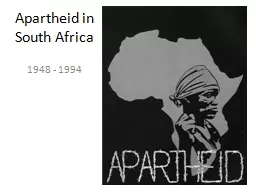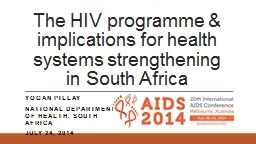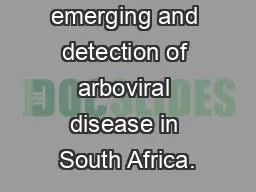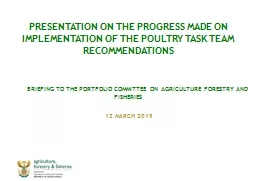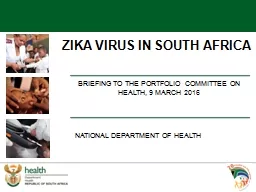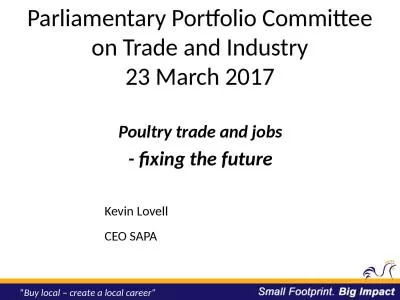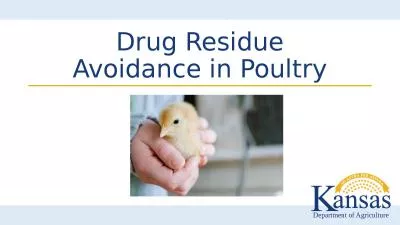PPT-PRESENTATION ON THE SITUATION OF THE POULTRY INDUSTRY IN SOUTH AFRICA
Author : uoutfeature | Published Date : 2020-08-27
22 March 2017 2 Presentation Outline Acronyms Integrated Value Chains Global Consumption Global trade Challenges in the poultry sector Transformation Competition
Presentation Embed Code
Download Presentation
Download Presentation The PPT/PDF document "PRESENTATION ON THE SITUATION OF THE PO..." is the property of its rightful owner. Permission is granted to download and print the materials on this website for personal, non-commercial use only, and to display it on your personal computer provided you do not modify the materials and that you retain all copyright notices contained in the materials. By downloading content from our website, you accept the terms of this agreement.
PRESENTATION ON THE SITUATION OF THE POULTRY INDUSTRY IN SOUTH AFRICA: Transcript
Download Rules Of Document
"PRESENTATION ON THE SITUATION OF THE POULTRY INDUSTRY IN SOUTH AFRICA"The content belongs to its owner. You may download and print it for personal use, without modification, and keep all copyright notices. By downloading, you agree to these terms.
Related Documents

